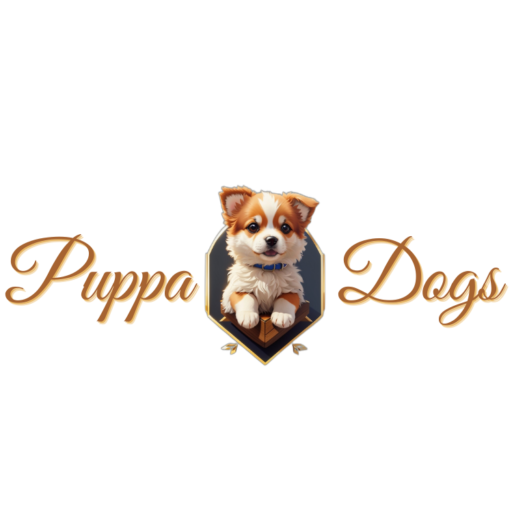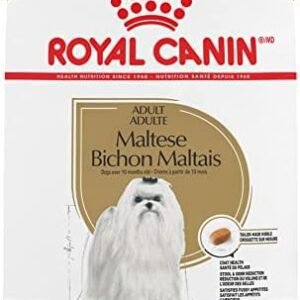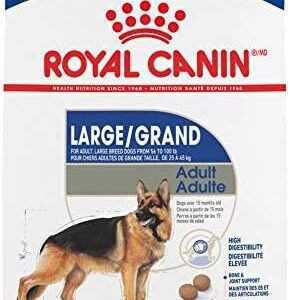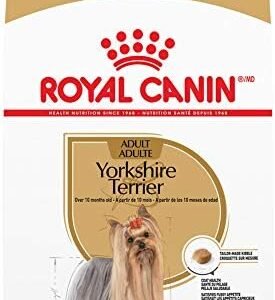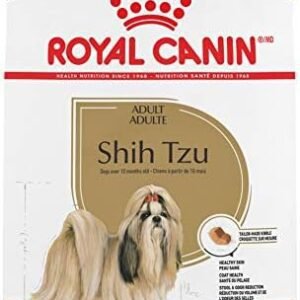As pet owners, we often think about how our furry friends make our lives better. They show us loyalty and greet us with joy. They deserve the best food to keep them happy and healthy.
Choosing the right food is key to their well-being. Wholesome dog food is essential for a healthy, vibrant life. It’s filled with natural ingredients that boost their health and longevity.
The focus on healthy dog food has grown a lot. There are many options, from grain-inclusive to grain-free. Finding the right one can be both fun and challenging.
Choosing wholesome dog food is more than just picking ingredients. It’s about creating a nourishing experience for our pets. This experience boosts their energy and vitality. Let’s explore how these choices can change our pets’ lives.
Table of Contents
Understanding the Importance of Nutritional Choices for Dogs
Choosing the right food for dogs is key to their health. A balanced diet boosts their energy and life span. The Association of American Feed Control Officials (AAFCO) says dog food must have at least 22% dry matter for puppies and 18% for adults. This shows how crucial diet is for dogs’ nutrition all their lives.
Too much protein doesn’t help dogs, and it shouldn’t be more than 30% dry matter. For dogs with health issues, a low-protein diet can be better. It helps their organs work less hard and keeps them safer.
Fats are important because they give dogs the energy they need and keep their skin and fur healthy. Vitamins and minerals from whole grains give dogs energy and important nutrients. Knowing this helps pet owners make better food choices for their dogs.
Dogs need both meat and plants in their diet because they are omnivores. Different breeds and sizes have different needs. This means diet is very important for their health and happiness.
What is Wholesome Dog Food?
Wholesome dog food is a thoughtful way to feed pets. It uses natural ingredients for high quality and value. Pet owners want the best for their pets, and wholesome dog food is a top choice.
Definition and Characteristics
Wholesome dog food focuses on quality protein, good grains, and no artificial additives. The Wholesomes product line has recipes with 3.5 to 4.5 stars. This shows the brand’s commitment to quality.
For example, Wholesomes Chicken Meal and Rice dry dog food has about 26.7% protein, 15.6% fat, and 49.7% carbs. This balance gives dogs the energy and nutrients they need. The brand is also recall-free as of December 2024, making it trustworthy.
- Scrumptious chicken is the first ingredient in this wholesome recipe.
- Crafted with brown rice for a nutritious, grain-in recipe you’ll feel good about serving your sidekick.
- Formulated for large breeds and active doggos who need additional energy.















- Made without grain or gluten, these chewy Jerky sticks are a perfect grain-free treat.
- Wild-caught and sustainably harvested in the Bering Sea, Pacific Whiting meal is a highly digestible protein source for …
- Wholesome vegetables, selected from US farms, help provide your dog with Key nutrients and fiber.















Key Differences from Standard Dog Food
It’s important to know the differences between wholesome and standard dog food. Wholesome foods are packed with nutrients, using named meats as the main protein. Standard foods might have fillers and lower-quality ingredients.
| Feature | Wholesome Dog Food | Standard Dog Food |
|---|---|---|
| Protein Source | Named meat meals | Generic meat sources |
| Fat Content | Average 16% | Varies greatly |
| Carbohydrate Level | Approximately 50% | Often higher |
| Quality Ratings | 3.5 to 4.5 stars | Variable ratings |
| Recall History | None (as of December 2024) | Varied recalls |
Many pet owners choose wholesome dog food for its quality and health benefits. It supports a responsible brand like Wholesomes. Investing in nutritious dog food improves your pet’s health and life span.
Essential Ingredients for Wholesome Dog Food
Choosing the right ingredients in dog food is key for a pet’s health. Knowing the difference between natural and synthetic ingredients helps pet owners make better choices. High-quality protein sources and a variety of fruits and vegetables for dogs are vital for a balanced diet.
Natural vs. Synthetic Ingredients
Natural ingredients give vital nutrients that boost health, unlike synthetic ones that may not offer the same benefits. Whole grains, meats, and vegetables are packed with vitamins and minerals dogs need. A study from Tufts University’s Cummings Veterinary Medicine School shows whole grains are great for dogs.
These natural parts ensure dogs get the nourishment they need without harmful fillers or additives.
Importance of Protein Sources
Quality protein sources are key for muscle growth and health. Ingredients like chicken, beef, and fish are rich in amino acids that help with growth and repair. The American College of Veterinary Nutrition says a dog’s diet depends on age, size, health, and breed.
Choosing premium protein sources that meet these needs is crucial for a dog’s health.
Beneficial Vegetables and Fruits
Fruits and vegetables for dogs add fiber and antioxidants to their diet. Carrots, blueberries, and pumpkins help with digestion, boost the immune system, and keep dogs hydrated. Veterinarians suggest adding these nutritious options to a dog’s meal plan.
Benefits of Wholesome Dog Food
Wholesome dog food is great for your pet’s health. It improves their overall well-being. It boosts their digestive health, energy levels, and health.
Improved Dog Health and Longevity
A diet full of vitamins, minerals, fats, and proteins is key. It helps prevent health problems in dogs. Dogs eating high-quality foods may live up to three years longer.
Good nutrition strengthens their immune system. This helps them fight off diseases better.
Enhanced Digestive Health
Digestive health is important for absorbing nutrients and waste. Foods high in fiber help with digestion. This makes dogs feel better and reduces stomach problems.
To learn more about improving your dog’s digestion, check out digestive supplements for dogs. A healthy gut means your dog stays active and full of life.
Better Energy Levels and Activity
Healthy fats like omega-3 and omega-6 give dogs natural energy. A good diet means dogs have more energy to play and be active. This is especially true for young dogs that need more calories for growth.
Older dogs can stay active too. Wholesome dog food makes every moment with your dog more joyful.
| Benefits | Description |
|---|---|
| Improved Dog Health | Adequate nutrition prevents health issues and supports longevity. |
| Enhanced Digestive Health | Better nutrient absorption and less gastrointestinal discomfort. |
| Increased Energy Levels | Natural fats and nutrients boost vigor and physical activity. |
Dog Food Nutrient Analysis
It’s important for pet owners to understand the dog food nutrient analysis. This helps in choosing the best diet for their pets. Nutritional labels show the key nutrients like protein, fats, vitamins, and minerals that keep dogs healthy.
Understanding Nutritional Labels
Nutritional labels guide you in picking the right food for your pet. The Association of American Feed Control Officials (AAFCO) sets standards for “complete and balanced” dog food. It requires at least 18% protein and 5.5% fats on a dry matter basis.
Carbohydrates should be between 30% and 50% to aid digestion. The caloric content varies from 80 to 350 calories per 100g, depending on the dog’s needs. Each product must show if it’s suitable for growth, reproduction, or adult maintenance.
Essential Nutrients Your Dog Needs
Pet food must have ten amino acids, twelve minerals, eleven vitamins, and two fatty acids for health. Nutritional adequacy statements confirm the food meets AAFCO standards. Feeding trials with real dogs ensure the food’s digestibility and long-term suitability.
Understanding nutritional labels and essential nutrients is key for optimal nutrition. It’s vital to consider your dog’s life stage for the right balance of growth, maintenance, and reproductive needs. Choosing the right food is more than picking a brand; it’s about the nutrients that benefit your dog.
| Nutrient | Minimum Level per 100g | Notes |
|---|---|---|
| Protein | 18% | Minimum required for adult dogs |
| Fats | 5.5% | Essential for energy and skin health |
| Carbohydrates | 30% – 50% | Provides energy and supports digestion |
| Calories | 80 – 350 | Varies based on dog’s activity level |
| Amino Acids | 10 types | Essential for muscle maintenance and overall health |
| Vitamins | 11 types | Supports various bodily functions |
| Minerals | 12 types | Important for bone health and metabolic processes |
| Fatty Acids | 2 types | Crucial for coat health and cellular function |
Choosing the Right Dog Food for Various Breeds
Choosing the right dog food is key to your pet’s health. Different breeds need different foods based on their size, age, and how active they are. Knowing these needs helps ensure your dog gets the nutrition they need.
Food Considerations for Large Breeds
Large breed dogs need special food to help them grow and stay healthy. Look for foods that help manage their weight and support their joints. These foods should have at least 25% protein to help build muscle.
It’s important to switch large breed puppies to adult food between 18-24 months. This helps prevent joint problems later on.
- REAL MEAT FIRST: Sustainably raised American salmon is the #1 ingredient
- LESS FILLER: Contains no by-product meal, corn, wheat, soy, artificial colors, flavors, or preservatives
- ADDED CALCIUM AND MORE: Supports bone and tooth health with added calcium and phosphorus plus guaranteed glucosamine for…















Food Considerations for Small Breeds
Small dog food is packed with calories because small breeds burn energy fast. They need more calories per pound than big dogs. Choose foods with good protein and fats to keep their energy up.
It’s also important to pick foods that help keep their teeth healthy. Many small breeds get dental problems easily.
- Scrumptious chicken is the first ingredient in this wholesome recipe.
- Crafted with brown rice for a nutritious, grain-in recipe you’ll feel good about serving your sidekick.
- Formulated for large breeds and active doggos who need additional energy.















Special Needs for Senior Dogs
As dogs get older, their diet changes. Dogs are considered seniors around age seven. While there’s no specific AAFCO guidelines for senior dog food, vets often suggest foods with more protein and less fat.
Some dogs might need special diets because of health issues. Always talk to a vet about your dog’s diet needs.
Wholesome Dog Food for Sensitive Stomachs
Choosing the right food is key for dogs with digestive issues. Foods for sensitive stomachs have digestive-friendly ingredients to ease discomfort. Knowing the signs of food sensitivity helps ensure your dog gets the right diet.
Types of Digestive-Friendly Ingredients
Look for dog food with easy-to-digest ingredients. Some good options include:
- Salmon and rice, known for gentle digestion
- Hill’s Science Diet Adult Sensitive Stomach & Skin dog food, a top choice for many.
- Freshpet Vital Benefits Digestive Health, made with non-GMO ingredients and vet-approved.
- Royal Canin Small Digestive Care, for smaller breeds weighing 2 to 22 pounds.
- Purina Pro Plan’s Adult Large Breed Sensitive Skin & Stomach Formula, great for larger dogs over 50 pounds.
- Fresh new look coming soon!
- This adult dry dog food promotes digestive health while nourishing skin
- A source of prebiotic fiber to support a balanced gut microbiome in your grown dog















- Made in USA
- 100% Natural US Farm Raised Chicken #1 ingredient
- No Meat Meals or By-Product Meals
- FOR SMALL DOGS WITH SENSITIVE STOMACHS: Royal Canin Small Digestive Care Dry Dog Food is formulated for small dogs 10 mo…
- HEALTHY DIGESTION: Optimal blend of highly digestible proteins, prebiotics, and dietary fibers promotes healthy digestio…
- OPTIMAL STOOL: Aids digestion and supports a balanced intestinal flora that also promotes optimal stool quality















- High protein dog food promoting muscle conditioning when combined with proper exercise and featuring salmon is the first…
- Dog kibble featuring glucosamine and EPA, an omega-3 fatty acid, for joint health and mobility and 100 percent complete …
- Sensitive skin dog food with omega-6 fatty acids to nourish healthy skin and lustrous coat















Signs Your Dog May Need Special Formulas
It’s important to know the signs of food sensitivity in your dog. Look out for these symptoms:
- Frequent vomiting or regurgitation
- Chronic diarrhea or loose stools
- Excessive gas or bloating
- Skin irritations or allergies
If you see these signs, talk to your vet. Switching to a special dog food can greatly improve your dog’s health and comfort. Knowing these symptoms helps you take care of your dog’s well-being. For more on what foods are best for dogs, check out this resource.
| Brand | Key Ingredients | Target Weight Range | Special Features |
|---|---|---|---|
| Hill’s Science Diet | Salmon, rice | All weights | Recommended for sensitive stomachs |
| Purina Pro Plan | Chicken, whole grains | Over 50 pounds | Formulated for skin and stomach sensitivity |
| Freshpet Vital Benefits | Non-GMO ingredients | All weights | Veterinarian designed for digestive health |
| Royal Canin | Balanced nutrients | 2 to 22 pounds | Supports intestinal flora |
| Purina ONE | Chicken, corn, whole grains | All weights | Budget-friendly, promotes healthy digestion |
- Purina ONE chicken and rice dog food offers a microbiome balance and a SmartBlend of high-quality ingredients, including…
- With real chicken as the first ingredient, this high quality dog food supports your dog’s strong muscles, including his …
- This high protein dry dog food for skin and coat care is highly digestible and has omega-6 fatty acids, vitamins and min…















- Made with highly digestible ingredients that are easy on your small dog’s stomach
- Provides high quality protein to maintain lean muscle in small breed dogs
- Omega-6s and vitamin E for beautiful skin & coat















- Oat meal is easily digestible and gentle on the digestive system
- High protein formula, with real salmon as the first ingredient
- Fortified with guaranteed live probiotics for digestive and immune health















- SMALL BREED DOG FOOD: Royal Canin Small Breed Adult Dry Dog Food is precise nutrition specifically made for small dogs 1…
- WEIGHT MAINTENANCE: L-carnitine helps maintain a healthy weight, while helping to meet the high energy needs of small do…
- SKIN AND COAT HEALTH: Optimal levels of fatty acids like EPA and DHA support skin and a healthy dog coat















- Country of origin is United States
- Item Package Length: 6.35cm
- Item Package Width: 6.35cm
Exploring Natural and Organic Dog Food Options
Choosing natural and organic dog food has many benefits for pets and their owners. These options focus on high-quality ingredients for the best nutrition. They also support responsible sourcing and improve a dog’s health.
Benefits of Organic Ingredients
Organic ingredients are good for a dog’s health. They are free from harmful chemicals, GMOs, and pesticides. This makes meals safer for pets.
About 70% of natural and organic dog foods include quality meats, whole grains, and vegetables. They also have Omega-3 and Omega-6 fatty acids. These help with digestion, skin health, and energy.
Switching to these foods should be done slowly. It’s best to do it over 1-2 weeks. This helps avoid digestive problems and sensitivities.
Popular Natural Dog Food Brands
Many trusted natural dog food brands exist. Castor & Pollux, for example, makes organic food in certified kitchens. This ensures quality and safety.
Orijen is known for using 85% premium animal ingredients. They focus on fresh, raw proteins. These brands use real ingredients for balanced nutrition that meets a dog’s needs.
- One (1) 23.5 lb bag of ORIJEN Amazing Grains Original Dry Dog Food
- Nutrient-dense, grain free* dry dog food formula tailored to support your dog’s immune function, digestion, skin and coa…
- Dry dog food made with the most succulent and nutrient-rich parts of the prey, containing 85 percent** animal protein an…















Understanding the Dosage Chart for Dog Food
Finding the right amount of dog food is key to keeping your pet healthy and happy. Each dog is different, based on their weight, how active they are, their age, and any health issues. A dog food dosage chart helps you feed your dog right, avoiding too much or too little food.
Factors Influencing Food Portions
When figuring out how much food your dog needs, think about these things:
- Age: Puppies need different amounts than adult or senior dogs.
- Weight: Bigger dogs usually eat more.
- Activity Level: Dogs that are more active burn more calories and need more food.
- Health Conditions: Some health issues might change how much food your dog needs.
- Spaying/ Neutering: Spayed and neutered dogs might need fewer calories than those that aren’t.
Age and Weight Considerations
The right amount of food depends on your dog’s weight and age.
| Dog Weight (lbs) | Puppy Food Portions (cups) | Adult Food Portions (cups) | Senior Food Portions (cups) |
|---|---|---|---|
| 7 | 1/4 | ½ | 1 |
| 30 | 1 | 1-2 | 1-1/2 |
| 60 | 2 | 3-4 | 3 |
| 90 | 5 | 5-7 | 4-4¾ |
How often you feed your dog changes as they grow. Adult dogs usually get two meals a day, while puppies might need three or more. The dog food dosage chart is a good start, but you might need to make changes based on your dog’s needs.
Feeding the right amount helps avoid health problems from eating too much or too little. Watching how your dog looks and feels helps make sure they get the right food for their needs.
Comparison with Other Brands
In today’s world, knowing the difference between wholesome and conventional dog food is key. It helps you choose the best for your pet. Premium dog food stands out for its rich nutrients and better digestibility. This makes it easier to pick the right food for your furry friend.
Wholesome Dog Food vs Conventional Brands
Wholesome dog food and conventional brands differ in several ways. Ingredients, production methods, and nutritional value are key. Conventional brands might use fillers and low-quality ingredients. This can lead to a lack of essential nutrients for dogs.
On the other hand, wholesome dog food focuses on high-quality proteins and real vegetables. This leads to better health benefits for dogs.
- Wholesome foods often have higher scores in nutritional value, as demonstrated by brands like Sundays, which achieved a perfect score of 10/10.
- Cost-effectiveness is another vital aspect. Taste of the Wild scored 9/10 for affordability, making it a popular choice, while the premium offerings like Ollie come at a higher price point, which may not fit every budget.
- In aesthetics, both Sundays and Ollie garnered high praise, showing that premium dog food can be visually appealing as well.
Evaluating Premium Dog Food Options
Premium dog food evaluation focuses on healthfulness and ingredient quality. Many brands now offer frozen, freeze-dried, or dehydrated options. These methods help preserve natural nutrients that conventional methods might destroy.
The table below highlights some notable brands based on various essential criteria:
| Brand | Cost per Week | Healthfulness Score | Aesthetics Score | Ingredients |
|---|---|---|---|---|
| Sundays | $24.50 | 10/10 | 9/10 | 75% real meat, 25% vegetables |
| Taste of the Wild | $10.00 | 7.5/10 | 6.5/10 | Grain-free, high-quality proteins |
| Ollie | $200.00 | 8/10 | 9/10 | Fresh ingredients, premium recipes |
This detailed analysis helps pet owners understand their options. It shows how premium dog food can improve your dog’s health. For more insights on dog food supplements, visit this link.
Reviews of Top Wholesome Dog Food Brands
Choosing the right food for your dog is important. Customer feedback and vet recommendations are key. They help find the best food for your dog’s health.
Analyzing Customer Feedback
What people say about dog food brands is very helpful. Here’s a table with some popular brands, their prices, and what’s in them:
| Brand | Price per Meal | Protein (%) | Fat (%) | Estimated Carbohydrates (%) |
|---|---|---|---|---|
| Best Dry Food | Starts at $2 | Not Disclosed | Not Disclosed | Not Disclosed |
| The Honest Kitchen | Subscription saves 25% | Not Disclosed | Not Disclosed | Not Disclosed |
| Open Farm | Starts at $3 | 36 | 18 | 38 |
| Viva Raw | Starts at $5 | Not Disclosed | Not Disclosed | Not Disclosed |
| Maev | Starts at $5 | Not Disclosed | Not Disclosed | Not Disclosed |
| PetPlate | Starts at $2 | Not Disclosed | Not Disclosed | Not Disclosed |
| Nom Nom | Starts at $3 | Not Disclosed | Not Disclosed | Not Disclosed |
Many pet owners like brands that are clear about what’s in their food. The right mix of protein and fat is important. For example, Open Farm’s Grain-Free Dog Food has 36% protein and a good fat-to-protein ratio, making it a favorite.
What Veterinarians Recommend
Vets have valuable advice on dog food. They look at nutrition and ingredients. Brands like PawTree and A Pup Above are praised for their protein content.
Experts also recommend Jinx Salmon, Brown Rice, and Sweet Potato. It has 30% protein and 16% fat, meeting different dietary needs. For more info, check out this resource.
Understanding Additives and Fillers in Dog Food
When looking at dog food, it’s key to know about additives and fillers. These can change how nutritious the food is. Choosing good dog food means spotting harmful dog food fillers and their health effects. Here’s a look at common additives to avoid and how fillers can harm your dog.
Common Harmful Additives to Avoid
Many dog foods have additives that are bad for your pet. Some of these include:
- BHA and BHT: Synthetic preservatives linked to health concerns.
- Ethoxyquin: A controversial preservative often used in pet food.
- Artificial colors and flavors: Used to enhance appearance and palatability, these lack nutritional value.
Knowing about these dog food additives helps you make better choices for your dog. Your dog should eat food without harmful chemicals, focusing on natural ingredients.
How Fillers Affect Your Dog’s Health
Fillers like corn, soy, and wheat are cheap but offer little nutrition. They can cause health problems for your dog. The impact of fillers on dog health includes:
- Allergies and skin irritations: Many dogs can develop allergies to common fillers.
- Poor digestion: Low-quality fillers often lead to digestive discomfort.
- Nutritional deficiencies: Fillers can dilute the essential nutrients your dog needs for overall health.
To meet your dog’s needs, choose food with quality protein and healthy fats over fillers. By reading labels and knowing about harmful dog food fillers, you can make better choices for your dog’s health and life.
| Type of Additive | Examples | Potential Effects |
|---|---|---|
| Synthetic Preservatives | BHA, BHT, Ethoxyquin | Linked to various health concerns |
| Fillers | Corn, Soy, Wheat | Poor digestion, nutritional deficiencies |
| Artificial Enhancers | Colorings, Flavorings | No nutritional value, may cause allergies |
It’s important to watch what goes into your dog’s food for their health. For more on healthy food options, look at resources that list good ingredients and their benefits.
- Scrumptious chicken is the first ingredient in this wholesome recipe.
- Crafted with brown rice for a nutritious, grain-in recipe you’ll feel good about serving your sidekick.
- Formulated for large breeds and active doggos who need additional energy.















- Made without grain or gluten, these chewy Jerky sticks are a perfect grain-free treat.
- Wild-caught and sustainably harvested in the Bering Sea, Pacific Whiting meal is a highly digestible protein source for …
- Wholesome vegetables, selected from US farms, help provide your dog with Key nutrients and fiber.















Tips for Transitioning to Wholesome Dog Food
Switching to wholesome dog food can greatly improve your pet’s health. It’s important to know how to introduce new food slowly. This usually takes 5 to 7 days. Some dogs might need more time to adjust, so be patient.
Gradual Introduction Strategies
Here are some steps to make the transition easier:
- Mix a small amount of new food with your dog’s current food. Gradually increase the new food over the week.
- Begin with 25% new food and 75% old food on day one.
- By day three, mix 50% new and 50% old food.
- By day five, use 75% new food and 25% old food.
- Finish the transition by day seven with 100% new food.
If you need to switch quickly, start with a small amount in three meals on the first day. Then, gradually increase the amount.
Monitoring Your Dog’s Reaction
It’s key to watch how your dog reacts to the new food. Check their stool quality. A score of 3 to 4 on a fecal chart means they’re digesting well. If they have mild diarrhea or gas, slow down the transition or go back to the old food.
Learn more about your dog’s diet needs. Check out the World Small Animal Veterinary Association for help on pet food labels.
By using these tips, you can help your dog adjust to the new food smoothly. This ensures they stay healthy and happy.
The Future of Dog Nutrition
The future of dog nutrition is exciting, with new trends in dog food. Brands like Next Level Dog Food are focusing on higher protein content. They offer up to 30% protein, more than the usual 18-25%.
They have special formulas for different breeds. This shows a big push for the best nutrition for dogs.
Sustainability is also key in these new trends. Eco-friendly packaging and reforestation efforts are becoming common. This shows that people care about the environment and their pets’ health.
More than half of pet owners want to use less plastic. This shows they’re making choices that help the planet and their pets.
The future of dog nutrition is looking bright. With new research and ideas, pets will get better health benefits. This journey is making a big difference in the market. It shows that both businesses and consumers care about our dogs’ well-being.
















